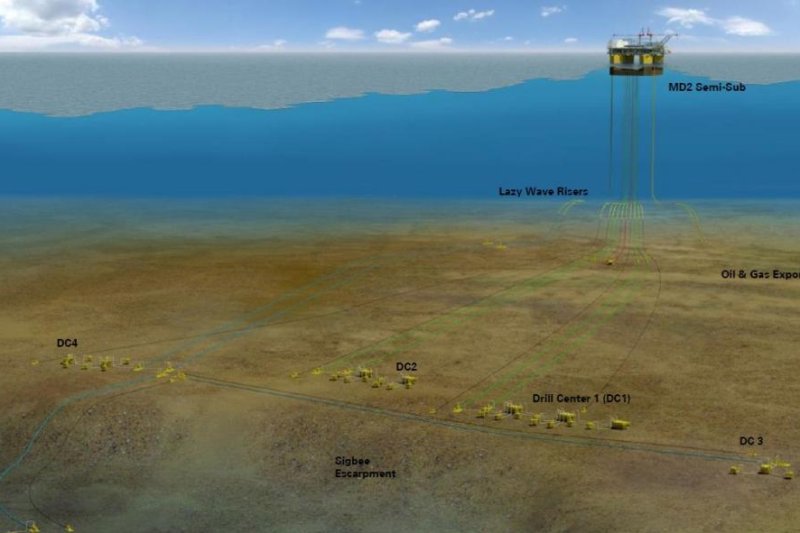French company Nexans tapped to help BP connect its Mad Dog prospect in the Gulf of Mexico to a floating production unit. Image courtesy of BP
April 26 (UPI) -- Work for BP is geared toward linking one of the largest fields in the U.S. Gulf of Mexico to a floating production unit, a services company said.
"We are committed to developing long-lasting solutions in a strongly competitive environment and over the years we have delivered many projects together with BP, including projects in the Gulf of Mexico," Winifred Patricia Johansen, a business development manager for French company Nexans said in a statement.
BP picked the company to supply some of the lines for the second stage of development of the Mad Dog field in the Gulf of Mexico. The work will connect the field to a floating production unit in the area.
The British energy company sanctioned the second phase of Mad Dog in 2015. The floating production unit will have a peak capacity of 140,000 barrels of crude oil per day once operations begin in late 2021.
All told, the Mad Dog field, discovered in 1998, holds more than 4 billion barrels of oil equivalent.
"The United States is expected to account for up to 80 percent of the increase in global oil supply to 2025," Nexans stated. "This growth is driving the development of new fields far offshore in ever greater water depths."
New efforts in the U.S. Gulf of Mexico, however, face an uncertain future. In April, Interior Secretary Ryan Zinke went against recommendations by saying the government won't cut royalty rates on profits from offshore drilling. Those in the industry said that, with countries like Brazil emerging as regional contenders, better rates would encourage more investments.
The U.S. waters of the Gulf of Mexico account for about 17 percent of total U.S. production, which is on pace to pass 11 million bpd by next year.















